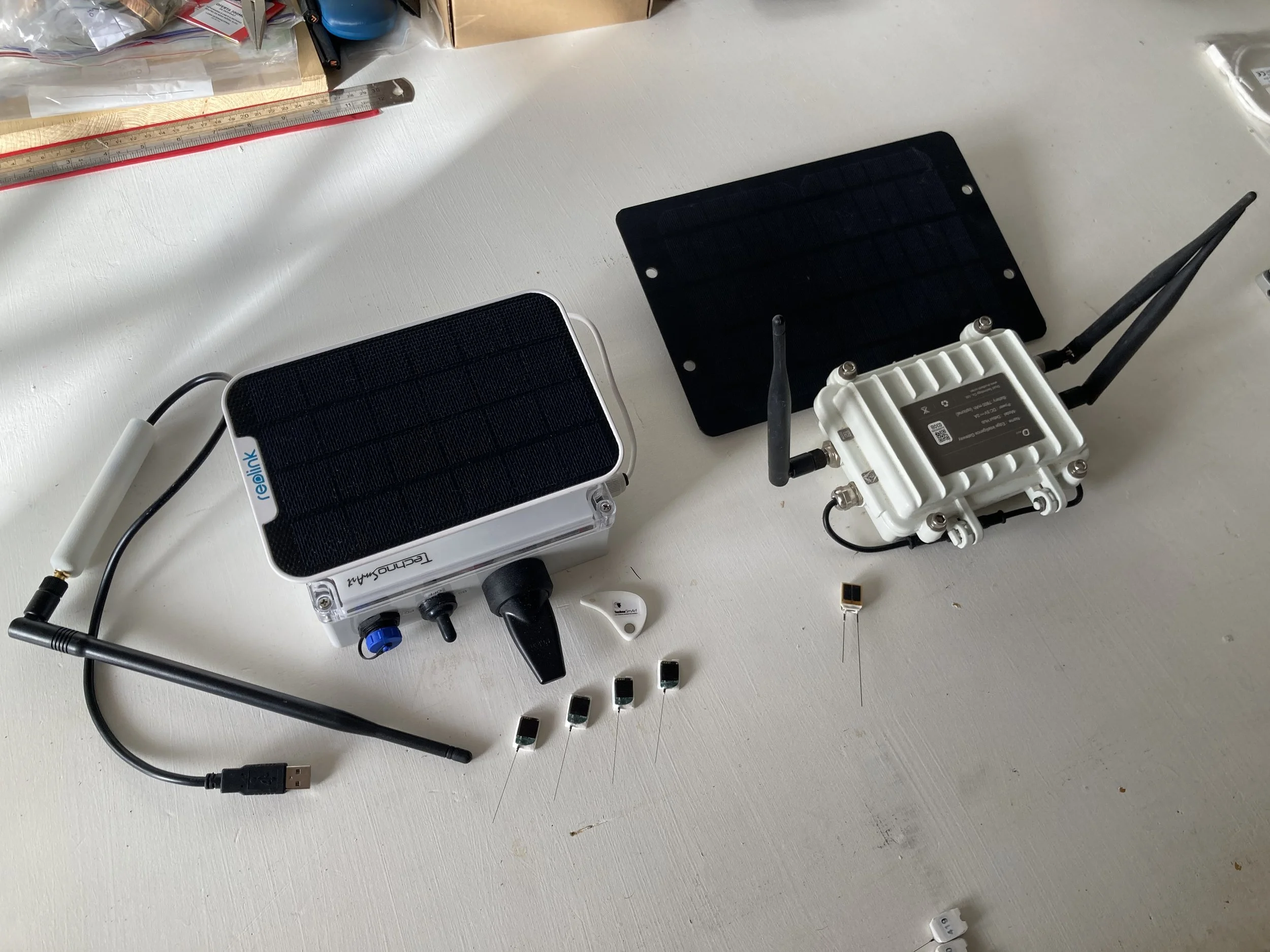Inter-island movements in Kentish Plovers? Preliminary findings from Cabo Verde
by Michael Roast
As part of a new collaborative project in 2023, we deployed solar-powered GPS devices or ‘tags’ to track detailed movements of resident Kentish Plovers breeding on Maio Island, Cabo Verde, for the first time. Fieldwork launched during October and November, deploying tags on Kentish Plovers during the breeding season, and was jointly undertaken by the Universities of Veterinary Medicine in Vienna and Budapest, and the University of Bath.
We expect the GPS data obtained from tags will provide year-round insight into the movements of individual Kentish Plovers, especially during the non-breeding season which is poorly known. The GPS data will generate a new understanding of social networks within the population, and how habitat use by individuals can influence social interactions, mate choice, and other breeding behaviours. Tracking data might also help us identify new and important conservation sites for the species in Cabo Verde.
The first pilot phase of the GPS tagging involved testing two different tagging technologies (Bluetooth vs. UHF radio), with the objective of selecting the best tagging system for the second phase in 2024. We deployed an initial 26 GPS tags onto captured birds in 2023, using a leg-loop harness system that keeps a GPS tag positioned on the back of the bird and charging in the sun (Fig 1A; somewhat analogous to a human wearing a climbing harness with a chalk bag on the back!). Up to 250 Kentish Plovers in the Maio population could eventually be tagged in 2024, comprising the majority of the population. Once most individuals are tagged and producing movement tracking data, we will soon be able to build up a complex network of social interactions and habitat use with some more technical analysis.
Figure 1 (A) Kentish Plover with GPS tag attached using a leg-loop harness. (B-D) Example movements from three different individual Kentish Plovers in the first month of deployment. These raw data plots are only intended to highlight the diversity of individual movements and areas used so far, but require further analysis. SP = Start Point, EP = End Point, numbers show number of points recorded in a localised area.
By the final day of fieldwork on 3rd December 2023 many tags were still detected around the breeding colony in Salina do Porto Inglês, and some interesting movements are already emerging. After only a few weeks, we have already observed diverse movement behaviours among individuals, including both some expected and unexpected movements. Most unexpectedly we have observed at least 3 individuals travel to Santiago Island, and visit at least 3 different sites along the Santiago coastline, suggesting that inter-island movements within Cabo Verde are more common than previously thought (Figure 1D).
‘Most unexpectedly we have observed […] that inter-island movements within Cabo Verde are more common than previously thought.’
We have also observed much more movement to inland areas of Maio Island than expected, where we suspect the plovers are foraging in rocky grassland areas. Individual plovers seem to be consistent in their preferred locations, with individuals returning multiple times to the same locations inland (Figure 1C). There were also some post-breeding movements that matched our prior expectations, where plovers have dispersed along coastal sites and other existing protected areas around Maio, for example, to the Morrinho Sand Dunes (Figure 1B).
‘Up to 250 Kentish Plovers in the Maio population could eventually be tagged in 2024, comprising the majority of the population.’
This work has only been possible through ongoing collaboration with the Maio Biodiversity Foundation and the University of Cabo Verde, and we look forward to seeing some more results and tagging more birds in the coming year!
Image credit – Image in Figure1A taken by Grant C. McDonald, all other pictures taken and produced by Michael Roast.
ABOUT THE AUTHOR
Michael Roast, a post-doctoral researcher at the University of Veterinary Medicine, Vienna, aims to understand how species interact with their environments and ecological communities. Currently based in Vienna, Michael leads a project on social behaviour and movement ecology in Kentish Plovers. Previously a post-doctoral researcher in the Seabird Ecology Group at the University of Barcelona, Michael focused on understanding the hidden demographic impacts of fisheries bycatch on seabird and sea turtle populations around West Africa.









